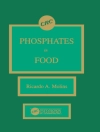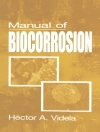Despite achievements in the application of enzymes, antibodies and biological receptors to diagnostics and sensing, the last two decades have also witnessed the emergence of a number of alternative technologies based on synthetic chemistry. This volume shows how synthetic receptors can be designed with characteristics that make them attractive alternatives to biological molecules in the sensory and diagnostics fields, with contributions from leading experts in the area. Subjects covered include synthetic receptors for a range of biomolecules, the use of antimicrobial peptides for the detection of pathogenic microorganisms, the development of molecularly imprinted polymer (MIP) nanoparticles, the in silico design of MIPs and MIP-based sensors, and two chapters examining the development of sensors from an industrial point of view. The particular focus of all chapters is on practical aspects, either in the development process or the applications of the synthesized materials. This book will serve as an important reference work for business leaders and technology experts in the sensors and diagnostics sector.
Mục lục
Multichannel Sensors Based on Biphenyl and Cyclohexane Conformational Changes.- Learning from Proteins and Drugs: Receptors that Mimic Biomedically Important Binding Motifs.- Molecular Recognition of Nucleotides.- Molecular Recognition of Oligopeptides and Protein Surfaces.- Antimicrobial Peptides for Detection and Diagnostic Assays.- Plastic Antibodies.- Computational Approaches in the Design of Synthetic Receptors.- MIP Sensors on the Way to Real-World Applications.- Molecularly Imprinted Au Nanoparticle Composites for Selective Sensing Applications.- Design and Development of in vivo Sensor Systems: The Long and Tortured Road to a Self-Contained, Implantable Glucose Sensor for Diabetes Management.- Evolving Trends in Transition Metal-Modified Receptor Design and Function.












